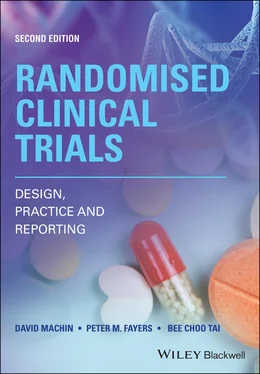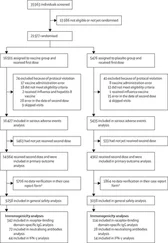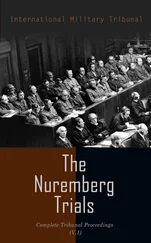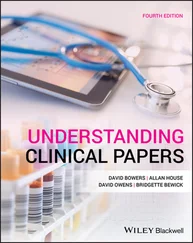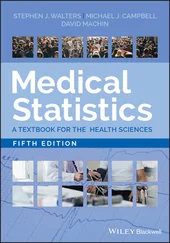Example 2.5 Delay to start of treatment – inoperable non‐small‐cell lung cancer
Although full details are not provided, there were unavoidable delays between randomisation and the commencement of radiotherapy (RT) in a trial conducted by the Medical Research Council Lung Cancer Working Party (1996). This resulted in 3/255 (1.2%) patients allocated 2‐fractions and 6/254 (2.4%) allocated 13‐fractions not receiving any radiotherapy at all. However, these are relatively small proportions, and so, the consequences of the dilution caused by these 9 (1.8%) patients not receiving any radiotherapy is likely to have little impact on the trial conclusions.
2.8 Making the assessments
In the simplest situation, once the patient has been checked for eligibility, some basic demographic and clinical variables recorded, consent has been obtained, randomisation activated, treatment commences and is completed within a short time span. If the trial endpoint is also defined to be observed within a relatively short time frame, the whole trial can be of very short duration and the data collection process should be relatively straightforward. Such a short‐term situation could arise in a trial to study the immediate postoperative pain relief provided by certain types of rapidly acting analgesics. However, most trials are more complex than this. For example, in many situations, the period of treatment may be extensive and perhaps differ for each intervention and vary from patient to patient. In trials concerned with approaches to wound healing, the time to satisfactory closing of the wounds will vary and very detailed monitoring of the wound may be needed to determine when the outcome is indeed satisfactory. Further some considerable time may be required before the endpoint can be determined, for example, trials testing potentially curative therapy for early prostate cancer might have to follow patients for more than a decade before any difference is detectable in an outcome such as survival. Thus, the trial design must stipulate carefully exactly when assessments are to be made and the criteria used for determining the endpoint meticulously documented within the trial protocol.
2.9 Analysis and reporting
The main purpose of the statistical analysis at the end of the trial will be on comparing the two intervention groups with respect to the endpoints specified in the protocol at the design stage. This comparison will involve estimating the difference between groups, the associated confidence interval and p ‐value. The statistical methods to be used will depend on the type of endpoint variable concerned. However, this basic analysis may need to take into account specific features of the design, such as whether a stratified or cluster randomisation was used. It may also be appropriate to allow for patient or disease characteristics which may influence outcome in an important way. Further, there may be secondary outcomes to summarise, although these may or may not involve formal statistical comparisons, and there may be unanticipated features such as serious adverse events (SAE) or unusual toxicities that were not anticipated at the protocol design stage. We describe some details of how the analysis of a trial is carried out in Chapter 8.
In addition, it is important to document patient progress through the different trial stages by, for example, tracking the number consenting to participate, the number randomised, those completing therapy and the number in which the endpoint assessment has been made in each intervention group. The CONSORT statement described by Moher, Hopewell, Schultz, et al . (2010) provides a framework for this. We referred to this in Figure 1.3, and we will expand upon on the details in Chapter 11.
It is also usual to provide in tabular form and by allocated intervention group, some basic demographic details, often a minimum of age and gender, together with some pertinent clinical information, perhaps stage of the disease and a summary of clinical and/or diagnostic test results.
2.9.1 Which patients to analyse
We discussed in an earlier section the importance of initiating the intervention as soon after randomisation as possible. Alternatively, it is best to delay the actual randomisation until the time that treatment can be initiated. Thus, for those receiving homoeopathic arnica in the trial of Example 1.4, the treatment could commence immediately postrandomisation. Indeed, the taking of the first medication could be supervised by the responsible investigator so that there was no delay and patients were less likely to withdraw immediately or refuse trial medication. In such a situation, it would not be in the best interest of the trial to randomise the patient and then not to have immediate access to the medication.
Example 2.6 Immediate start of treatment– children with fever
In a randomised controlled trial reported by Hay, Costelloe, Redmond, et al . (2008), the median time between randomisation and giving the first dose of study drug to children with fever was 8 minutes for paracetamol plus ibuprofen, 9 for paracetamol alone and 9 for the ibuprofen group. However, one suspects that this ideal state of affairs could not be replicated in too many situations.
2.9.1.1 Intention‐to‐treat (ITT)
Despite every effort to commence treatment as soon after randomisation as possible, there will be circumstances when the patient nevertheless refuses the treatment allocated or may even request the alternative option. In double‐blind trials, requesting the other option, at an early stage postrandomisation, would be very unlikely but in an open trial where the patient is fully aware (and can recognise the option), this will be more of a problem. However, even if a patient commences the intervention in question, they may subsequently refuse to continue with it and even wish to withdraw from the trial entirely.
The intention‐to‐treat (ITT) principle is that once randomised the patient is retained in the allocated group for analysis whatever occurs, even in situations where a patient is randomised to (say) A but then refuses and even insists on being treated by option B . As we have previously indicated, the effect of such a patient is to dilute the estimate of the true difference between A and B . However, if such a patient were analysed as if allocated to treatment B , then the trial becomes no longer truly and totally randomised since patient choice rather than chance has determined the allocation in such cases. The resulting comparison may then be seriously biased to an unknown extent and direction. In contrast, analysis based on the ITT principle ensures that for a trial established to demonstrate superiority of one intervention over another, any estimate of their difference is if anything biased towards the null. In this case, although some bias may be present, we know what the consequences will be. For example, in a trial in which there are patients who may have diluted the difference yet an ITT analysis still demonstrates a clear difference between the treatment options, then the investigators can reasonably infer that there is indeed a difference.
In contrast, the difficulty with analysing a trial by the treatment patients actually received is that we do not know the direction of the bias. Clearly if there are relatively few patients who do not receive their allocated intervention, then this is not likely to be a major issue. Conversely, if the numbers are large, then this would be a major concern and may render the trial results untrustworthy.
One procedure that was once in widespread use was for the investigating team to review the trial data in detail after the protocol treatment and follow‐up were complete and all the trial‐specific information collected so as to decide which patients should be in the final comparison. This review would, for example, retrospectively check that all the patient eligibility criteria were satisfied and that there had been no important protocol deviations whilst on treatment. Only if eligibility and compliance to protocol (however defined) were confirmed would the subject be deemed eligible for the analysis. Usually, this review would not be blind to the treatment received, and even if the trial were double‐blind, there may still be clues once the data are examined in detail as to which treatment is which.
Читать дальше
